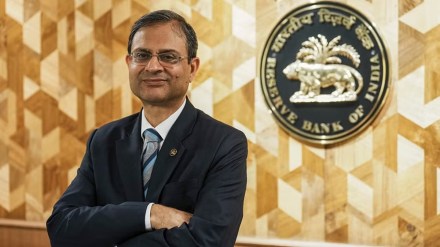Amid global uncertainties and tariff pressure, the Reserve Bank of India Governor Sanjay Malhotra said that he is hopeful that the negotiations between India and US will play out and the tariff impact is minimal. The additional 25% tariffs will be effective from August 27.
“Post the April announcements by the US of increased tariffs of 26%, we had projected downwards our GDP growth by 20 basis points. After that, there has been another additional 25% tariff, making it 50% which will kick in another couple of days. We are hopeful that the tariff negotiations will play out and the impact will be minimal,” Malhotra said at the FIBAC conference on Monday.
He added that 45% of the sectors are outside the tariff regime but the remaining 55%, which are in gems and jewellery, textiles, apparel, shrimps and other sectors can see potential impact.
RBI assures liquidity, supports growth
“The government on its part is pushing reforms and they are also looking at free trade agreements, some of which have already been in the works for some time..,” he added.
“We have provided ample liquidity to the banking sector and whatever else is required to support growth of the economy and including those of sectors which are impacted more, if it so happens, we will not be found wanting in our job,” Malhotra said.
In his address, he also said that the foreign exchange reserves stood at $695 billion, as per the latest figures and is sufficient to cover 11 months merchandise exports. He added that the RBI has not “lost sight” of growth. The RBI has been on a rate easing cycle since February and has reduced the repo rate by 100 basis points.
“We will continue to conduct monetary policy with the primary objective of price stability, keeping in view the objective of growth,” he said.
Governance, risk framework and redressal
Earlier in his inaugural address, the governor said that while the RBI wanted to give full autonomy to the board of regulated entities, there are concerns that they have been over-burdened.
“We are trying to rationalise now these macro policies that need to be approved by the boards of the regulated entities and leave the procedural and routine matters with the management under the board so that the board gets quality time to deliberate on strategic and important matters.”
Malhotra also said that the draft guidelines on credit risk and expected credit loss-related framework will be issued soon.
He emphasised on the need for a grievance redressal mechanism in banks and the RBI.
He said that RBI is currently reviewing 2 frameworks- one, the internal ombudsman framework at the level of the regulated entities and the other is the RBI’s integrated Ombudsman system.
At the bank level ombudsman system, he said that the RBI has had discussions with the Indian Banks Association and will issue a draft for consultation.
“We might seem to be on opposite sides with the regulated entities trying to accelerate growth and the regulators focusing on stability but we actually have the same objectives. We are in the same team,” Malhotra said.
